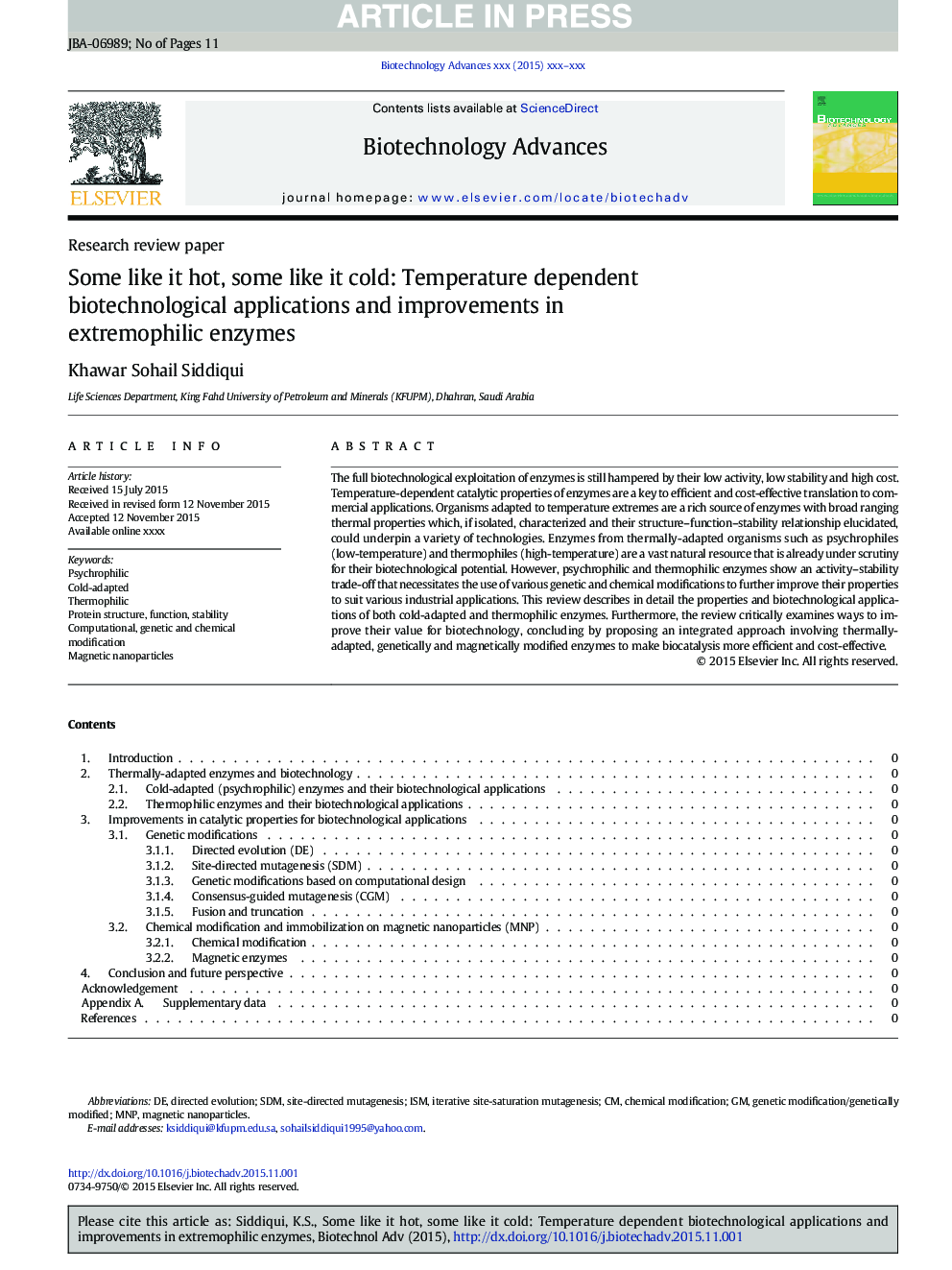| Article ID | Journal | Published Year | Pages | File Type |
|---|---|---|---|---|
| 10231411 | Biotechnology Advances | 2015 | 11 Pages |
Abstract
The full biotechnological exploitation of enzymes is still hampered by their low activity, low stability and high cost. Temperature-dependent catalytic properties of enzymes are a key to efficient and cost-effective translation to commercial applications. Organisms adapted to temperature extremes are a rich source of enzymes with broad ranging thermal properties which, if isolated, characterized and their structure-function-stability relationship elucidated, could underpin a variety of technologies. Enzymes from thermally-adapted organisms such as psychrophiles (low-temperature) and thermophiles (high-temperature) are a vast natural resource that is already under scrutiny for their biotechnological potential. However, psychrophilic and thermophilic enzymes show an activity-stability trade-off that necessitates the use of various genetic and chemical modifications to further improve their properties to suit various industrial applications. This review describes in detail the properties and biotechnological applications of both cold-adapted and thermophilic enzymes. Furthermore, the review critically examines ways to improve their value for biotechnology, concluding by proposing an integrated approach involving thermally-adapted, genetically and magnetically modified enzymes to make biocatalysis more efficient and cost-effective.
Keywords
Related Topics
Physical Sciences and Engineering
Chemical Engineering
Bioengineering
Authors
Khawar Sohail Siddiqui,
